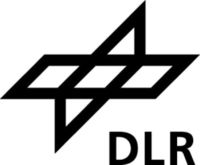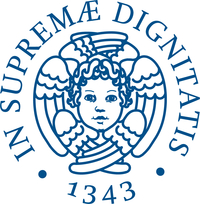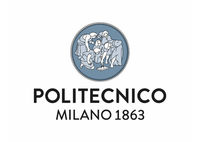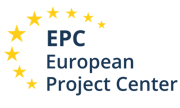
Institut für Luft- und Raumfahrt
Christian Bach
Marschnerstr. 32
01307 Dresden
Phone (): +49 (351) 463-38097
Fax: +49 (351) 463-38125
ascension@tu-dresden.de
http://ascension-itn.eu
Beneficiaries
Technische Universität Dresden (TUD)
Technische Universität Dresden (TUD) is one of the largest technical universities in Germany and one of the leading and most dynamic institutions in the country. With 18 faculties in five schools, it offers a wide range of degree courses and covers a broad research spectrum with a focus on Health Sciences, Biomedicine & Bioengineering, Information Technology & Microelectronics, Smart Materials & Structures, Energy, Mobility & Environment as well as Culture & Societal Change, a combination of disciplines which is considered to be exemplary in Germany and throughout Europe. The TUD has about 32,400 students, one seventh of which come from abroad and 8,300 staff hailing from 70 countries. TUD ranks among the Top 100 of Europe’s Most Innovative Universities and in 2012 became one of the German “Universities of Excellence”. The Chair of Space Systems belongs to the School of Engineering Sciences at the Technische Universität Dresden (TU Dresden) which enjoys an excellent reputation: over 10,000 students, al-most 2,000 employees in 40 institutes and centres contribute daily to engineering sciences. As part of it, with 24 employees, the Chair of Space Systems develops highly innovative space propulsion systems, their own sounding rocket as a platform for chemical rocket engines and small satellites with more than 20 space proven payload systems. That also compromises small sensor systems for different space applications, which is in focus as a part of this present project.
German Aerospace Center (DLR)
DLR is the national aeronautics and space research centre of the Federal Republic of Germany. Its extensive research and development work in aeronautics, space, energy, transport and security is integrated into national and international cooperative ventures. DLR has also been given responsibility by the federal government for the planning and implementation of the German space programme. DLR has approximately 8000 employees at 16 locations in Germany. The involved department´s research covers all aspects of operation of liquid propellant rocket engines with a focus on combustion chamber related topics (DLR Institute of Space Propulsion) and all aspects of Space Launcher System Analysis (DLR SART). The Mobile Rocket Base, abbreviated MORABA, is a department of the DLR Space Operations and Astronaut Training in Oberpfaffenhofen near Munich. Since the 1960s, the MORABA has performed scientific high altitude research missions with unmanned rockets and balloons, and has developed the required mechanical and electrical systems. Their operational areas include upper atmosphere research, microgravity research, astronomy, geophysics, materials science, as well as hypersonic research.
Università degli Studi di Roma “La Sapienza” (USR)
Sapienza University of Rome, founded in 1303 by Pope Boniface VIII, is one of the oldest universities in the world, and a top performer in international university rankings. With over 700 years of history, 111,000 students, 4000 teachers and 2000 employees, in addition to 2000 administrative staff in university hospitals, Sapienza is the biggest university in Europe. The world's leading university rankings place Sapienza at the forefront among Italian universities, for quality of research and teaching and for its international dimension. Sapienza currently offers over 250 programmes and over 200 vocational master courses. The Department of Mechanical and Aerospace Engineering – DIMA – is part of Sapienza University of Rome. DIMA, with a staff of about 100 employees, offers 2 Bachelor Degrees and 3 Master Courses, as well as three PhD programs and five Professional Master Courses. DIMA research activities are focused on theoretical and applied mechanics, fluid dynamics, aerospace propulsion, mechanical and thermal measurements, energy and power systems, space systems and structures. The main research activities of the Aerospace Propulsion Branch (APB) of DIMA rely in the strong background in numerical simulation, design, analysis of gas dynamics phenomena occurring in aerospace propulsion. Researches are mainly directed to rocket applications and aim to understand and explain the behaviour of the propulsion systems both as a whole and at component level.
ONERA
ONERA is the French national aerospace research centre. It is a public research establishment, with 8 major facilities in France and about 2,000 employees, incl. 1,500 scientists, engineers & technicians. ONERA conducts application-oriented research, which is designed to support the competitiveness and creativity of the aerospace and defence industries. ONERA covers all the disciplines and techniques needed to drive progress in aerospace: aerodynamics, flight dynamics, propulsion, structural strength, materials, optics and laser, acoustics, radar and electromagnetism, electronics, systems, robotics, information processing. The Multi-Physics for Energetics Department (DMPE) conducts research to identify and understand the physical phenomena in energetics and to proceed with their description. It is in charge of the implementation of physical models for combustion, internal and external flows in the multidisciplinary numerical codes developed at ONERA and of their validation based on experiments in representative conditions. This implementation is also conducted to model the coupling phenomena (e.g. heat transfer and structure, aeroacoustics and its interaction with materials & multiphase flows).
Université libre de Bruxelles (ULB)
4 scientific Nobel Prizes, 1 Fields Medal, 3 Wolf Prizes and 2 Marie Curie Prizes are evidence of the University's longstanding tradition of excellence. ULB is an active member of the Research Area and is involved in almost 130 projects financed by FP7. Over the past few years, it has obtained 7 starting Grants from the ERC and 2 Advanced Grant. ULB has 12 faculties that cover all the disciplines, closely combining academic input and research. It offers almost 40 undergraduate programmes and 250 graduate programmes (among them 15 Masters fully taught in English). It also collaborates with 20 Doctoral schools, with almost 1,600 PhD in progress. One of ULB’s main aims is to give its students a solid foundation in critical thinking and a taste for research, while at the same time catering to the needs of new publics. ULB-ATM is specialized in low cost and reusable space access, through activities with ESA-ESTEC, NASA, EC FP programs, Belgium-funded research activities and PhD research grants. ULB-ATM developed expertise in the field of design and experimental testing of hybrid rocket engines that will be put forward and further developed in the ASCenSIon project. The research team at ULB-ATM comprises about 35 PhD students and post-doc researchers plus 7 technicians.
Bremen University of Applied Sciences (HSB)
Hochschule Bremen is a medium size university of applied sciences offering 70 bachelor and master degree programs in engineering, natural sciences, economics and social sciences. In the academic year 2019/20 8500 students have been enrolled at Hochschule Bremen, one third of them in science and engineering programs. Hochschule Bremen has a total staff of about 500 including 150 full professors. It is organised in 5 faculties and is the only university of applied sciences in Germany offering a complete set of degree programs in Aerospace and Aviation. The Institute of Aerospace Technologies (IAT), which belongs to the faculty of nature and engineering, is a teaching and research unit of Hochschule Bremen running the study programs and research activities in the fields of aviation and aerospace. Offered study programs in these fields are Aerospace Engineering (B.Sc.), Aerospace Technologies (M.Sc.), Aviation Systems Engineering and Management (B.Sc.) and Aeronautical Management (M.Eng.). The research work at the IAT focuses on aircraft and unmanned aerial vehicle design, spacecraft design and space propulsion systems. In the area of space propulsion, current research activities cover N2O/PE hybrid propulsion systems, N2O/ Ethanol and H2O2/Ethanol propulsion systems of up to 3000 N of thrust.
Università di Pisa (UniPi)
Università di Pisa – UniPi - (Italy) (www.unipi.it) is an ancient and prestigious academic and research institution with a long-standing tradition in industrial engineering and hard science, in particular physics and chemistry. In 2013, the University of Pisa finished with USR (which is also part of the consortium) in first place among the Italian universities, according to the Academic Ranking of World Universities. The administrative staff comprises 1.900 employees. UniPi has 50.000 students and an additional 3.500 doctoral students. UniPi participates with a team of researchers coming from the Aerospace Engineering Division of the Department of Civil and Industrial Engineering (DICI, www.dici.unipi.it). At DICI, major areas of study and research in aerospace engineering include space systems, space mission analysis and design, flight mechanics, fluid dynamics and aerodynamics, aerothermodynamics, chemical and electric rocket propulsion, air-breathing propulsion, structures and materials. To this purpose, the Aerospace Engineering Division runs a broad set of dedicated facilities and specialized laboratories. Research activities are carried out in close collaboration with several intergovernmental organizations, prestigious universities, and aerospace and mechanical companies.
Technische Universität Braunschweig (TUBS)
TUBS is the oldest university of technology in Germany (founded 1745) and it is ranked among the top engineering universities engineering in Germany. It has about 20,000 students, 2,200 academic staff, 1,500 administrative staff members. The Institute of Space Systems (IRAS) performs various activities in the field of space engineering. Since 1970, a primary subject is the development of advanced computer programs for the orbital mechanics of satellites and the practical application of this software for space mission planning and satellite re-entries. IRAS has performed pre-warning calculations for the German Government in case of several risk-object re-entries and is participating in the annual re-entry campaigns performed by the Inter Agency Space Debris Coordination Committee (IADC) on behalf of DLR. IRAS has expanded its research to innovative docking mechanisms, GNC algorithms, CubeSat development, reliability assessment of spacecraft and robotics. Thus, the research focusses on AOC of spacecraft, docking and active space debris removal using servicer spacecrafts that enable a controlled re-entry. Innovative docking mechanisms like adhesive bionic materials are used as well as multibody dynamics. These can be validated with a comprising test environment consisting of an air-bearing table, a robotic arm and several test bodies. This work also benefits from the space debris research that provides risk analyses and failure probabilities for spacecrafts in earth orbit. A further work group for new systems and technologies allows research areas like propulsion systems for small satellites and probes as well as utilization of local research and science of the lunar environment.
Politecnico di Milano (PoliMi)
Politecnico Milano (PoliMi) is a university, founded in 1863, that teaches technologies in a variety of innovative, specialised subjects as engineers and architects. POLIMI concentrates on quality and innovation in teaching and research training with high international standards, with more than 1300 professors and research fellows. In 2017, the students were 42938. According to QS World University Rankings 2017, POLIMI ranked the 24th position worldwide, within the first 10 position in Europe in the area of Engineering and Technology and 1st in Italy. The entity involved in the current project is the Dipartimento di Scienze e Tecnologie Aerospaziali (PoliMi-DAER), established as an autonomous institute in the 1950’s. The main activity within the Department is education, and the Department hosts the Laurea (B.S.), in Aerospace Engineering, the Laurea Magistrale (M.S) in Space Engineering and Aeronautical Engineering, and Dottorato di ricerca (Ph.D.) in Aerospace Engineering. Each year 280 students complete the B.S. courses, 200 the M.S. and 10 the Ph.D. The skills the Space group offers to the team are related to space systems design and testing, and to its long experience in astrodynamics. According to the two areas, POLIMI-DAER has developed more than 50 space mission design studies and has been involved in external funded collaborations being in charge of trajectory and mission design for Earth and interplanetary missions, guidance navigation and control for satellites and launchers, space robotics. DAER is well equipped with numerical and experimental laboratories.
DEIMOS
DEIMOS Space is the technology company within the ELECNOR Group specialised in the design, engineering and development of solutions and systems integration in the aerospace, satellite systems, remote sensing, information systems and telecommunications network sectors. In the space sector its expertise encompasses Mission and Flight Engineering, Space Situational Awareness, Ground Segment Systems, Flight Software Systems and Global Navigation Satellite Systems.
 The project leading to this application has received funding from the European Union’s Horizon 2020 research and innovation programme under the Marie Skłodowska-Curie grant agreement No 860956.
The project leading to this application has received funding from the European Union’s Horizon 2020 research and innovation programme under the Marie Skłodowska-Curie grant agreement No 860956.
Follow us!
Follow us!
© Technische Universität Dresden
Institut für Luft- und Raumfahrt, Marschnerstr. 32, 01307 Dresden
Quelle: https://ascension-itn.eu/Beneficiaries
















